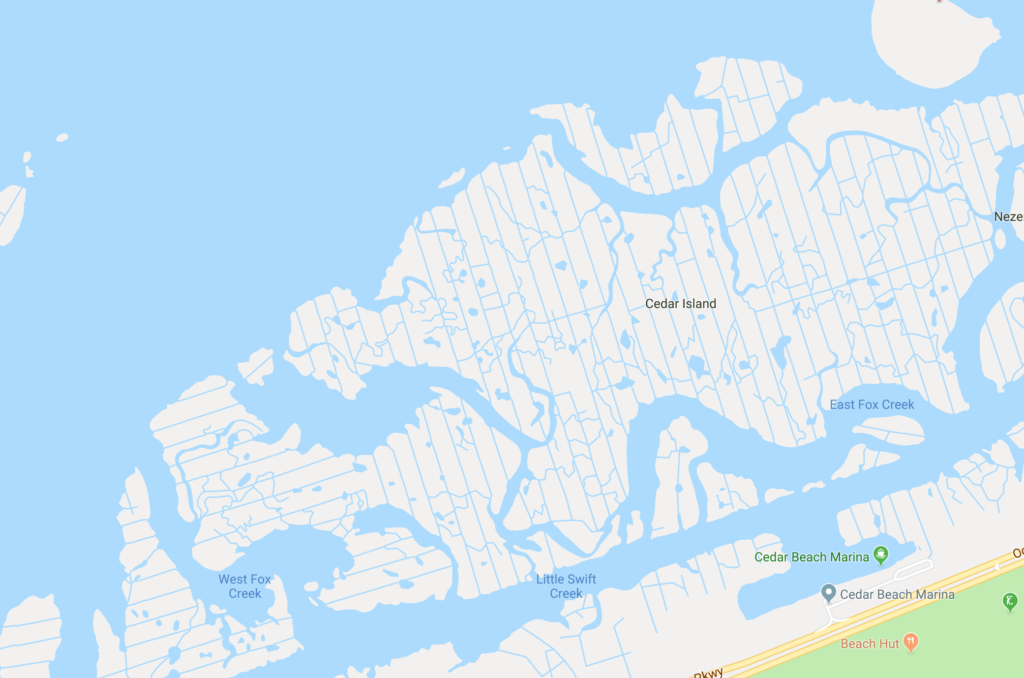
A few weeks ago, Birgit sent a map of Oyster Bay. “I would love to find out what these channels on Cedar Island are like,” she wrote,
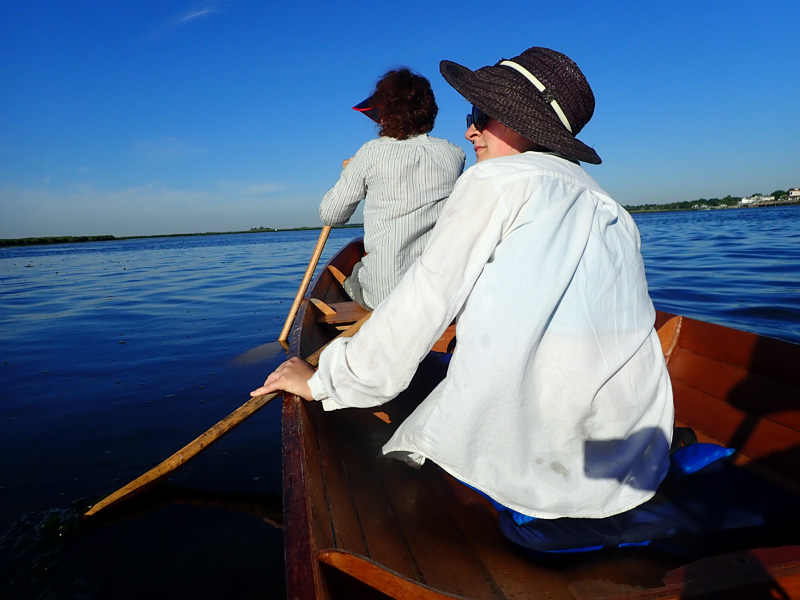
“they look like marine crop circles to me, and I’m sure there is a sci-fi story hidden in plain sight.”
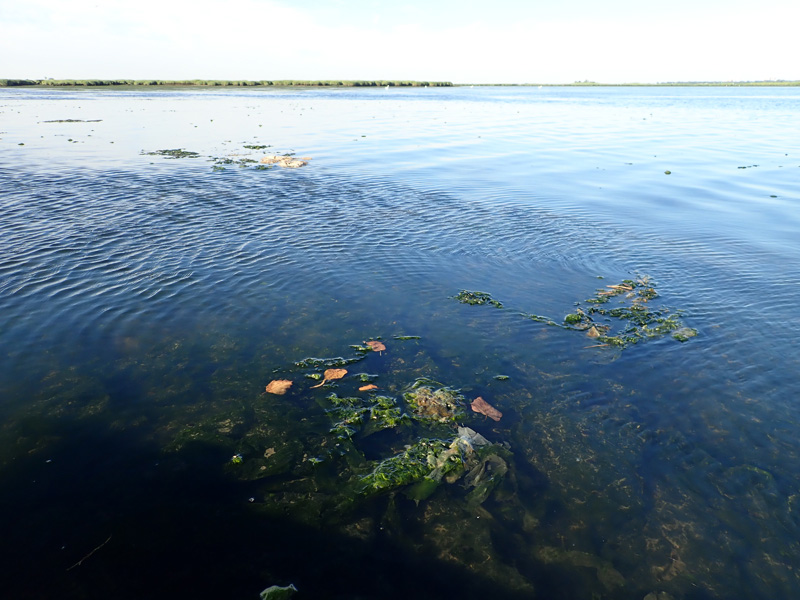
It was hard to see much from the water, the marsh was so flat it defied any topographic reckoning.
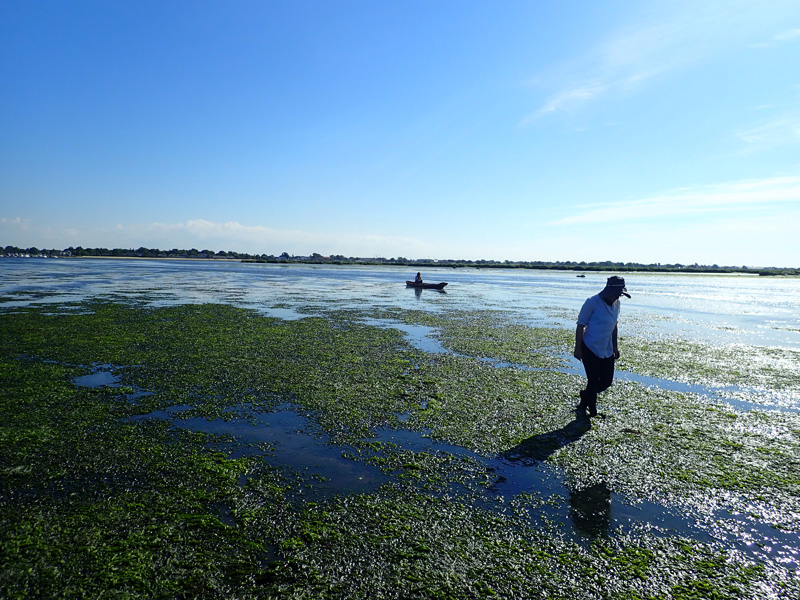
Also, we had another problem.
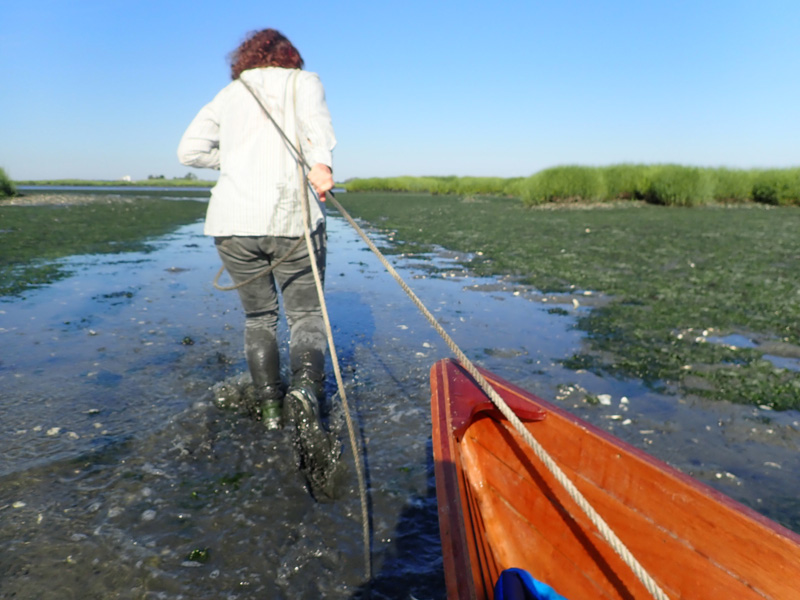
The tide was low, and places that looked like water on the map were actually land.
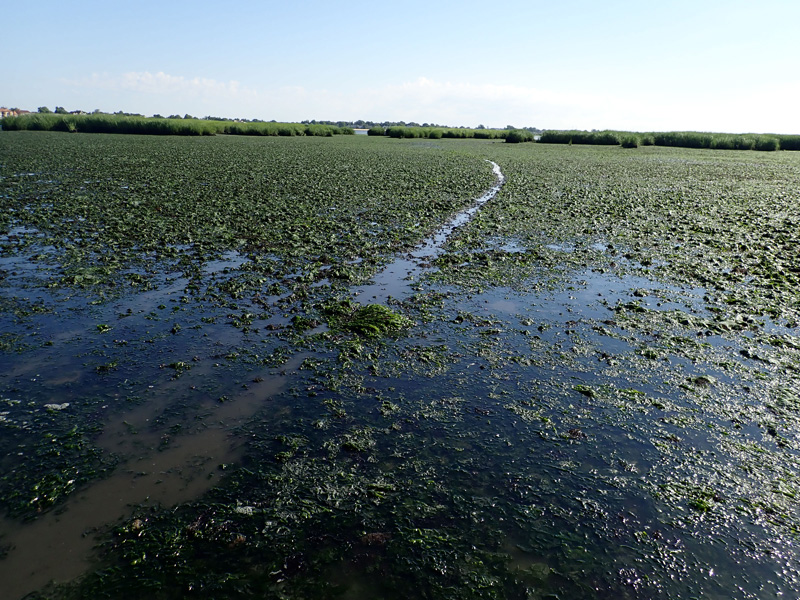
We cut a path through the marsh,
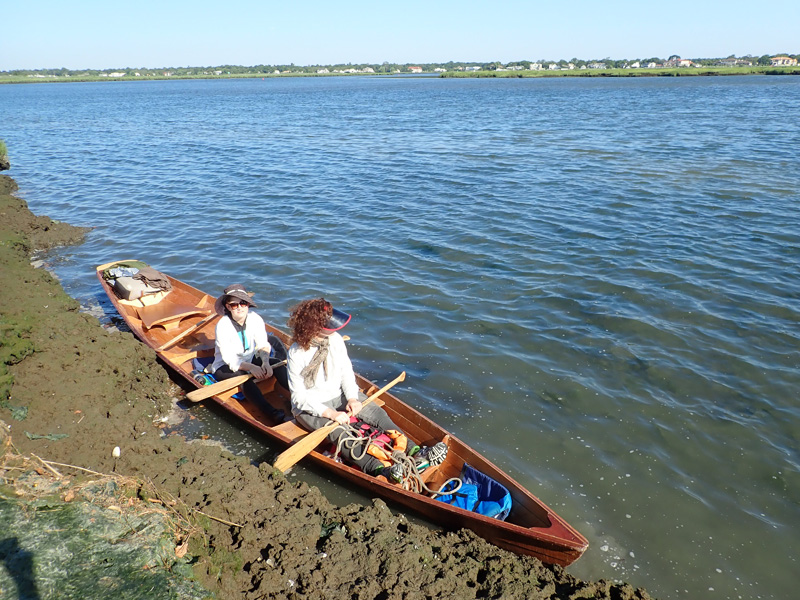
and found an island, which from the satellite photo, appeared to be sliced across with strange parallel lines.
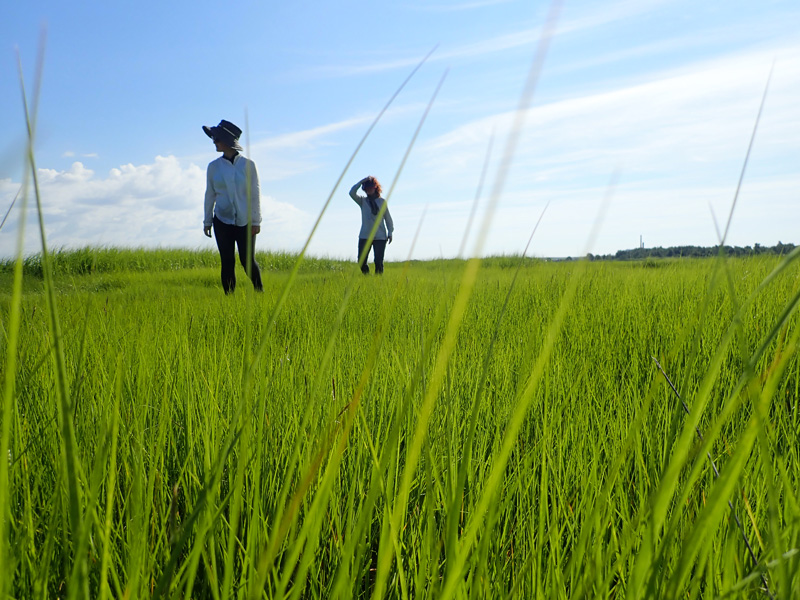
They were hard to see at first. The surface of the island looked perfectly flat, but the ground was spongy and uneven, a porous bank of peat that changed under every step.
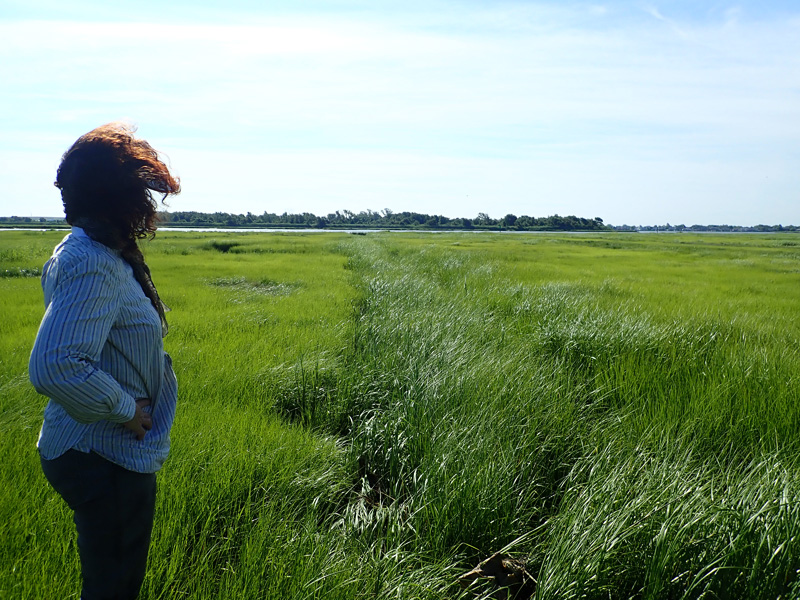
Could this be one of the lines?
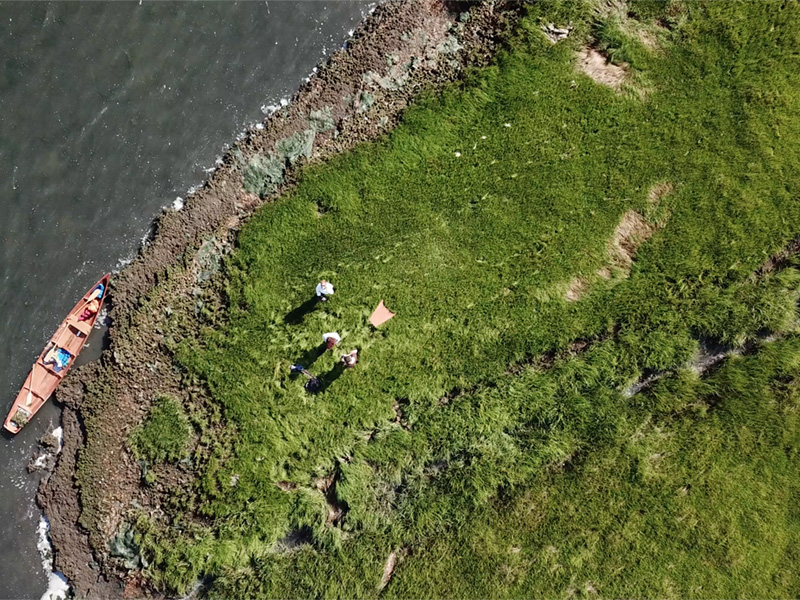
We sent up a drone camera to see how it looked from above.
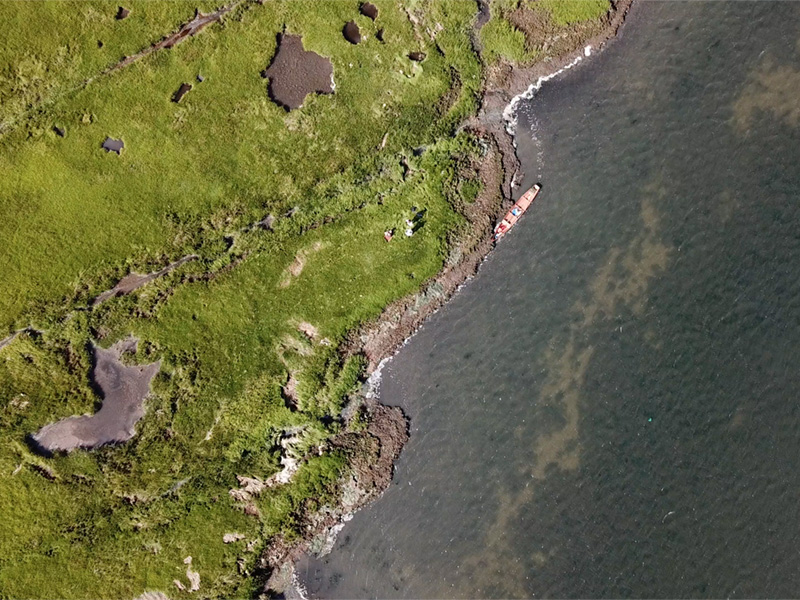
At 100 feet, something began to appear.
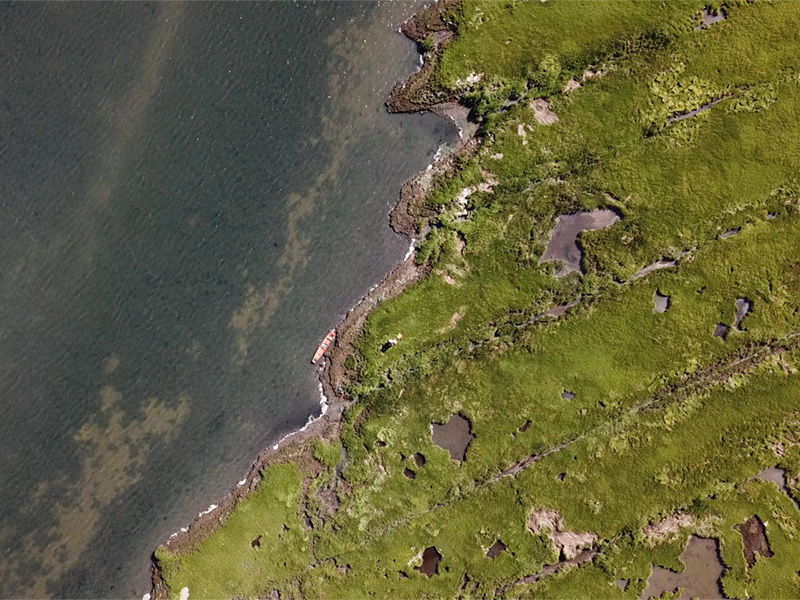
At 200 feet, we could see perfectly parallel lines cut evenly through the marsh.
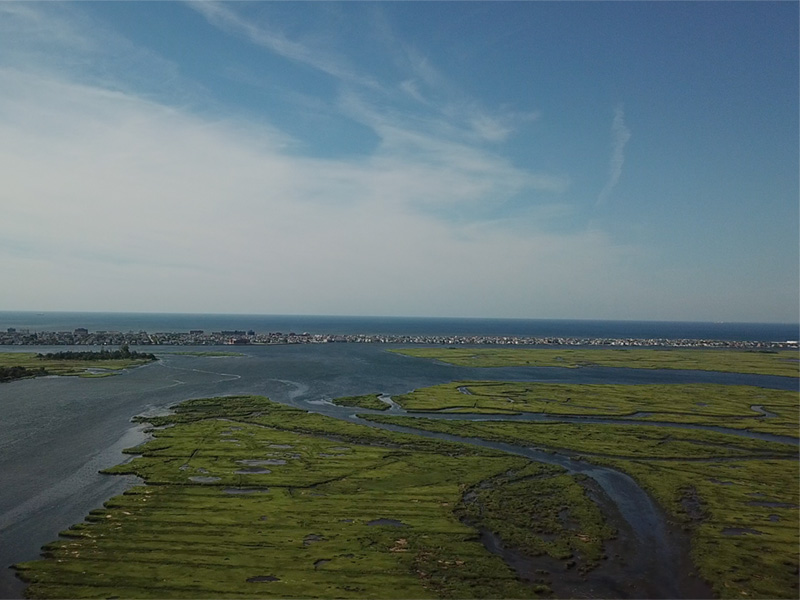
As we panned the horizon, we could see the entire marsh, crossed with channels, about 60 feet apart and 2 feet wide.
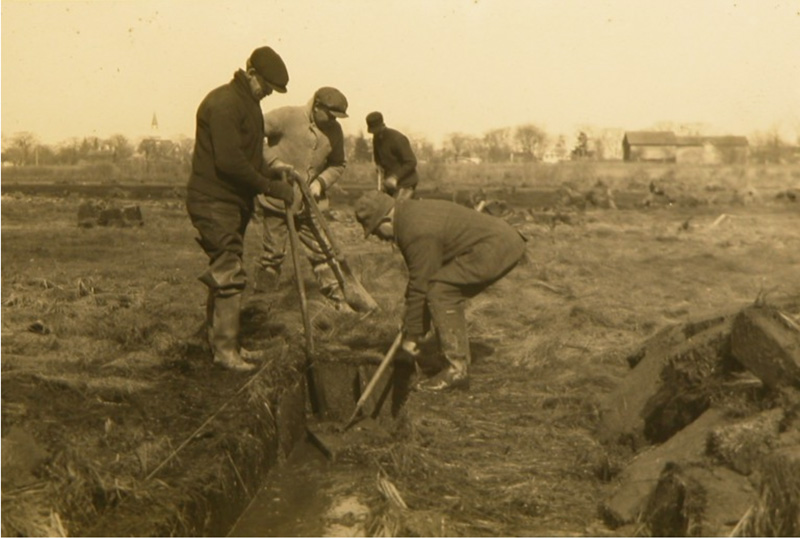
The channels were dug in the 1930s to control mosquitos and mosquito born illness. Long Island has almost 1000 miles of trenches, mostly dug by hand by Works Progress Administration employees.
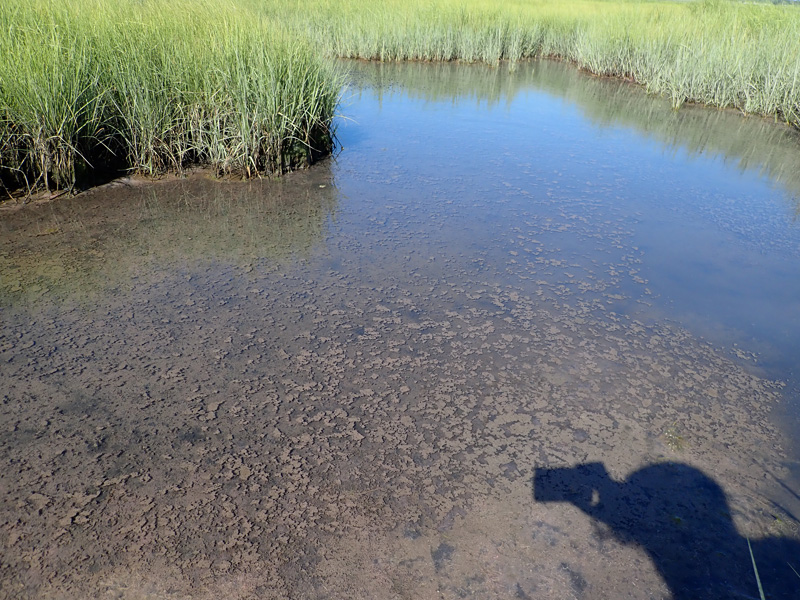
The project might not have exterminated the mosquitos, but it affected the marsh in other ways.
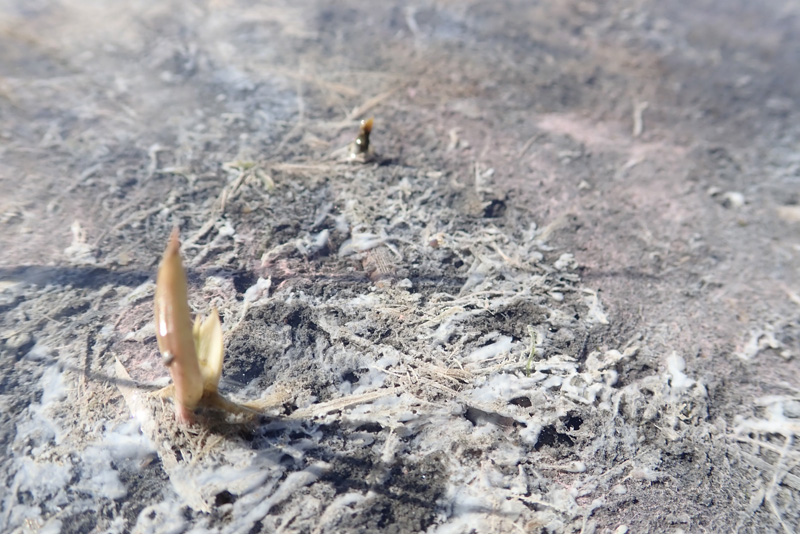
The trenches contain high levels of nitrates and pollutants, which funnel into tidal waterways.
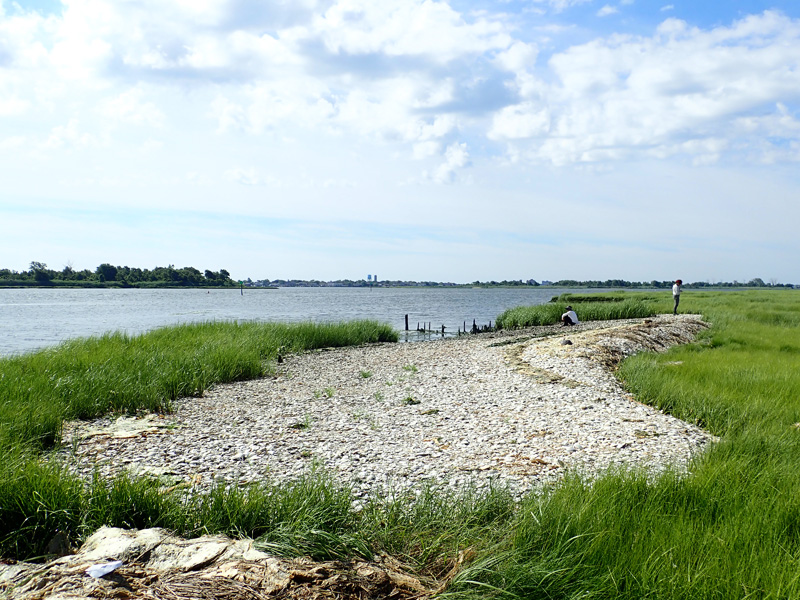
At the other end of the channel, there was a bank of shells,
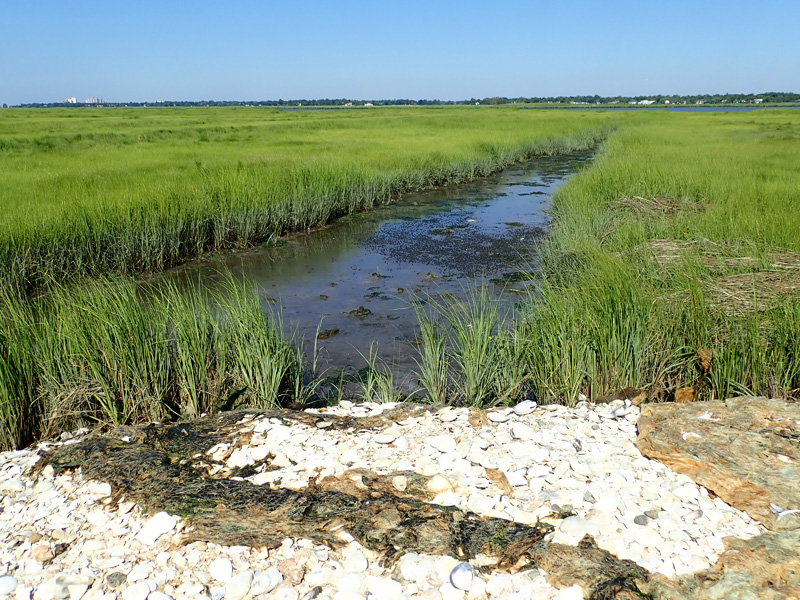
almost like scar tissue healing back up over a giant cut.
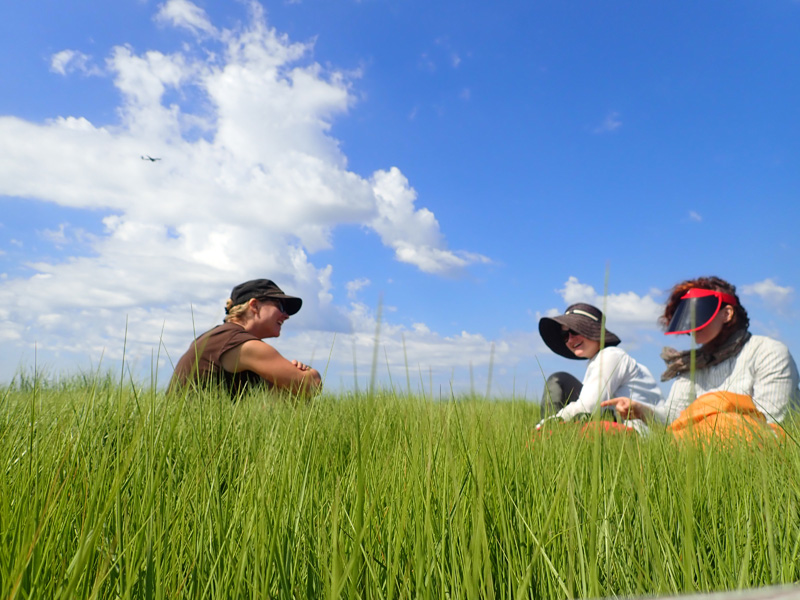
“How do you read the channels now that we are here?” I asked Birgit, “If they are signs, what do they mean?”
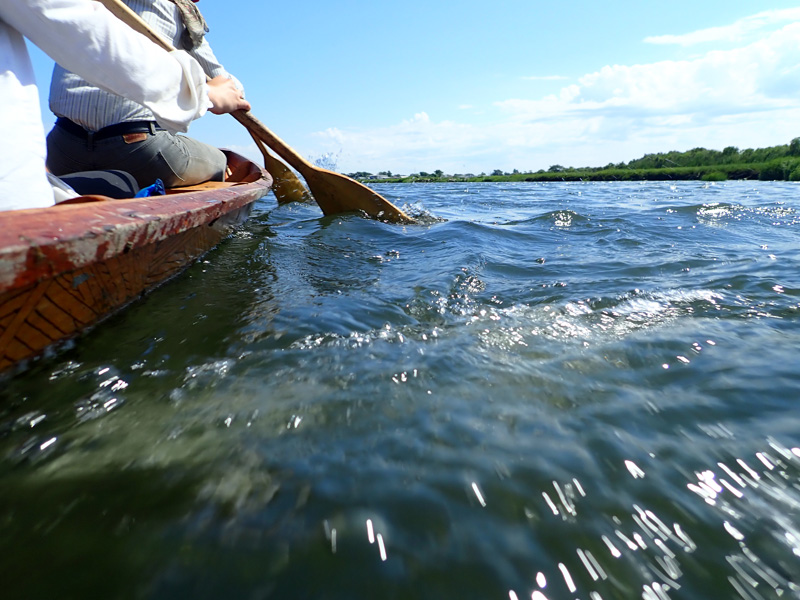
“I guess it’s not as fun to speculate when we already know a little bit about the channels.” said Birgit,
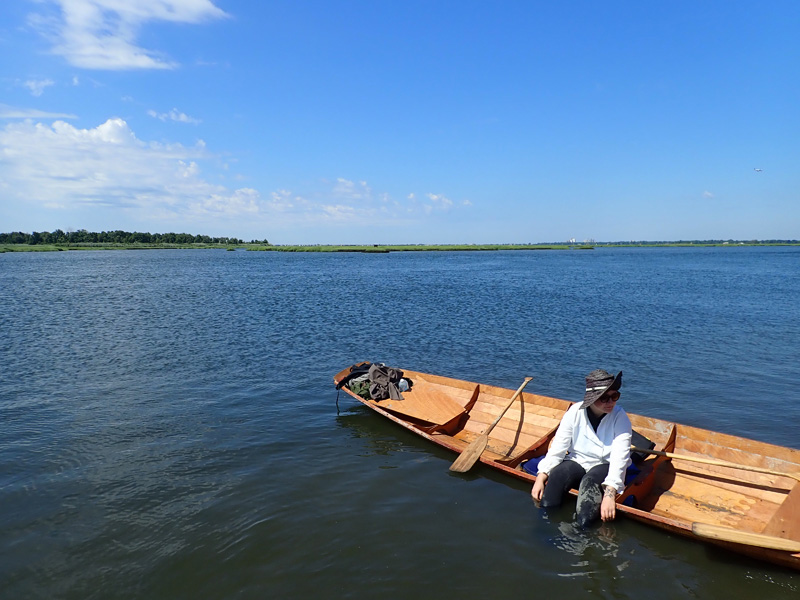
but the day was not over, and the marsh had something unusual yet in store.
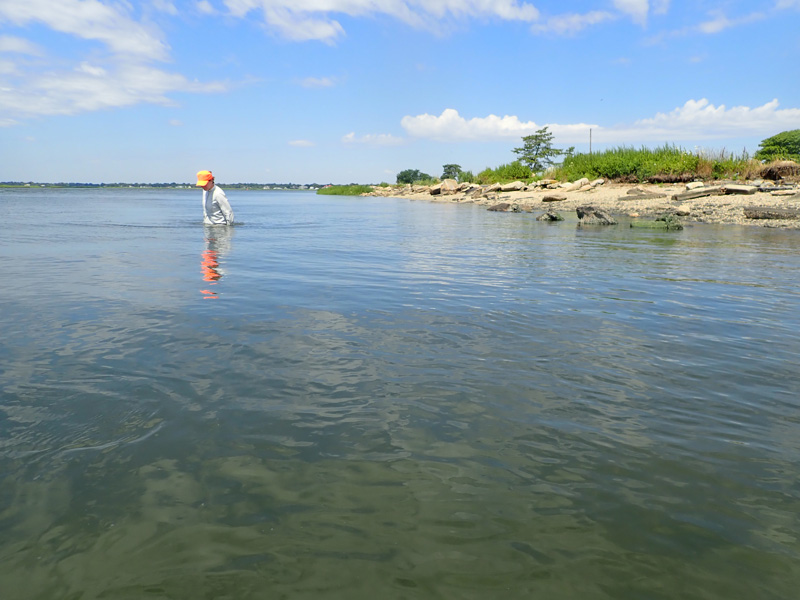
We swam across to another little island,
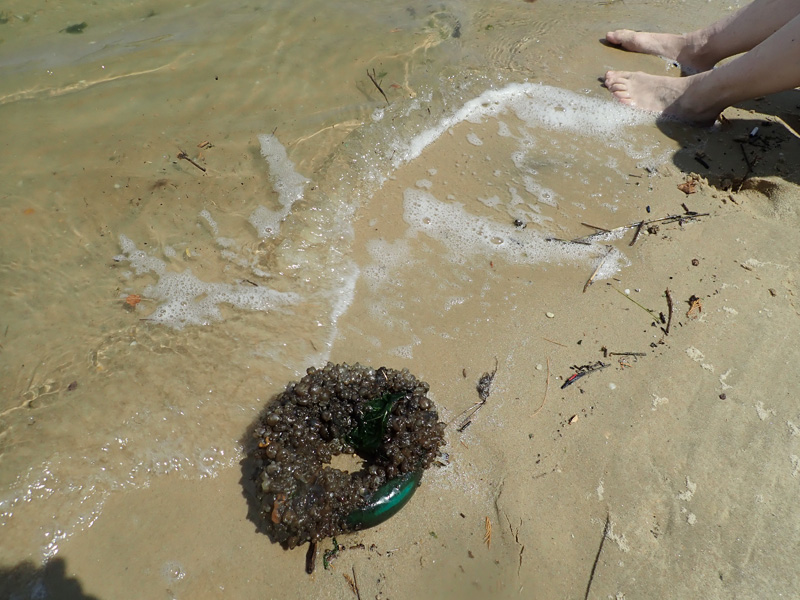
and saw something washed up on shore,
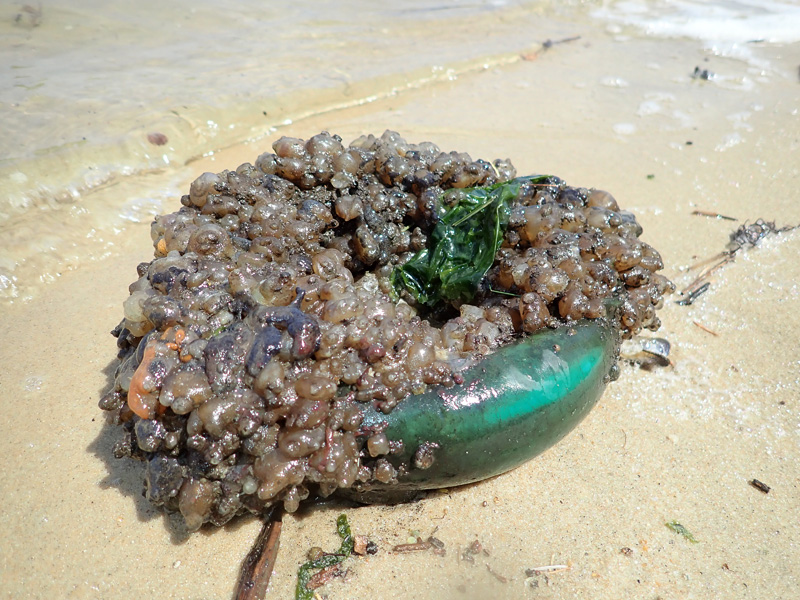
a piece of plastic covered with soft living things.
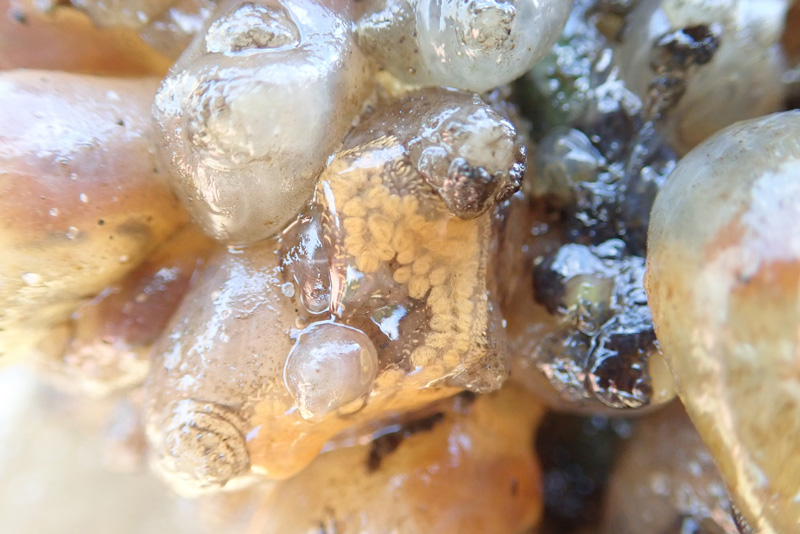
They seemed like egg sacs, but each sac contained something completely different.
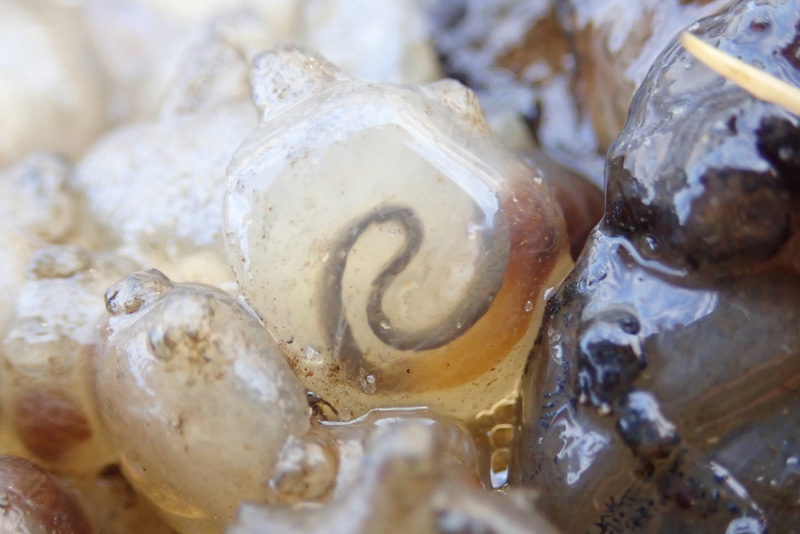
What kind of creature could lay so many different things?
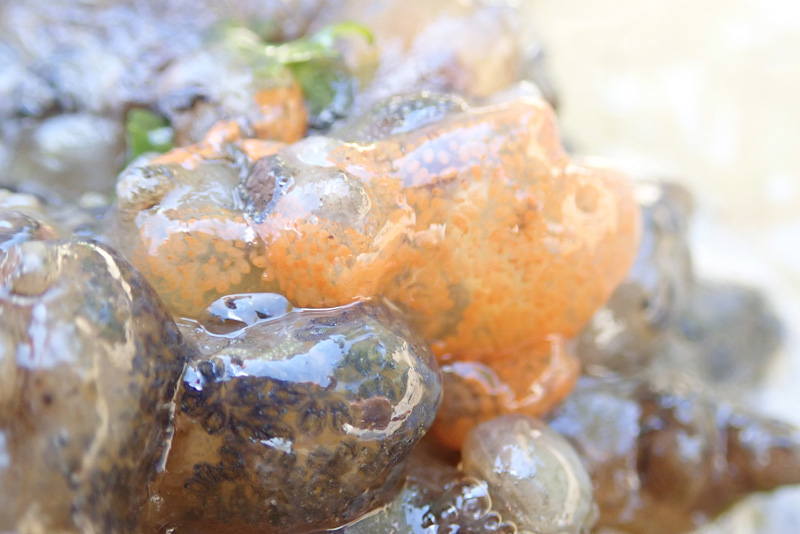
Perhaps they were mutations in the shadow of a power plant.
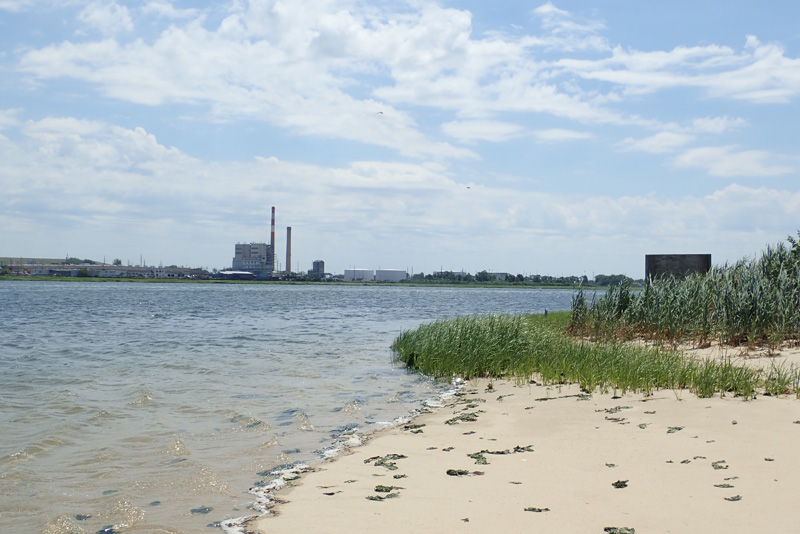
This could be our science fiction, we thought, a thing that we know nothing about.
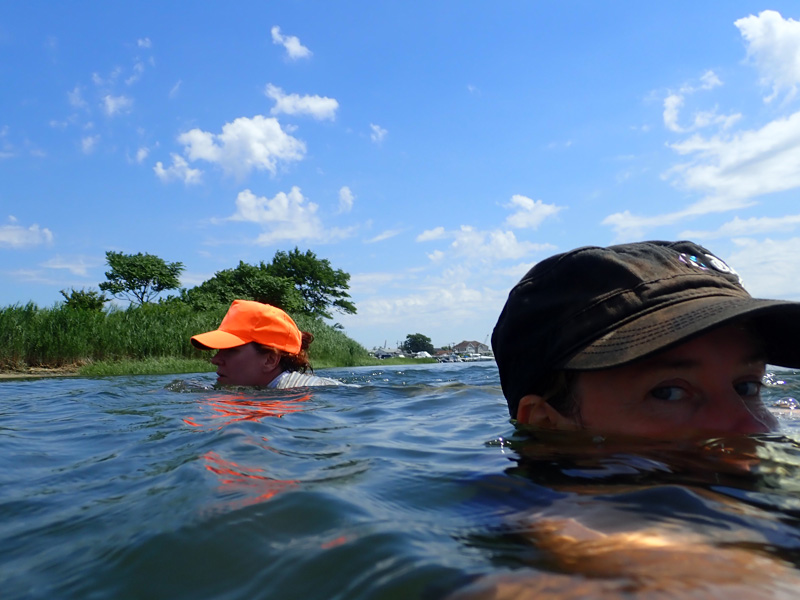
↑ Return to Top of Page ↑